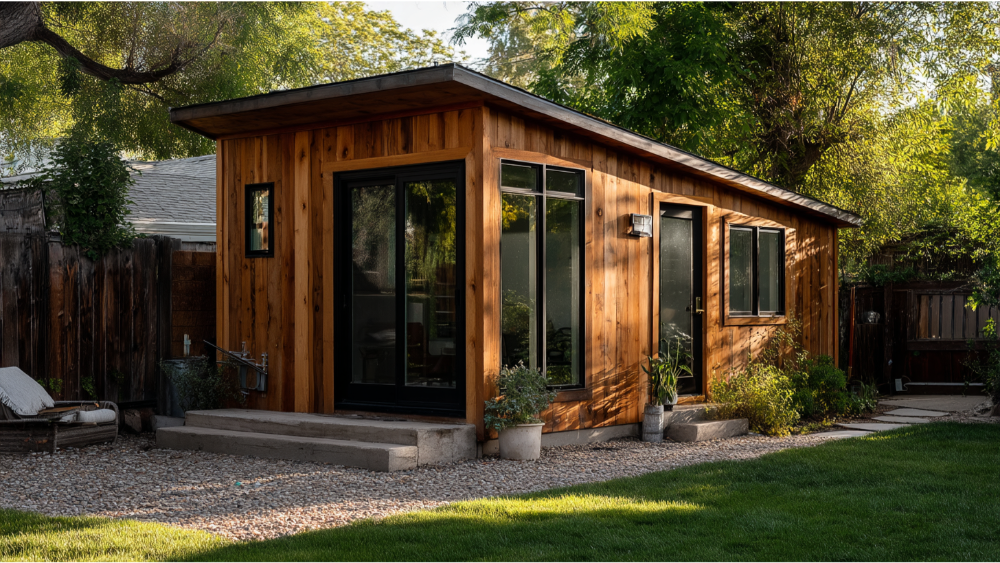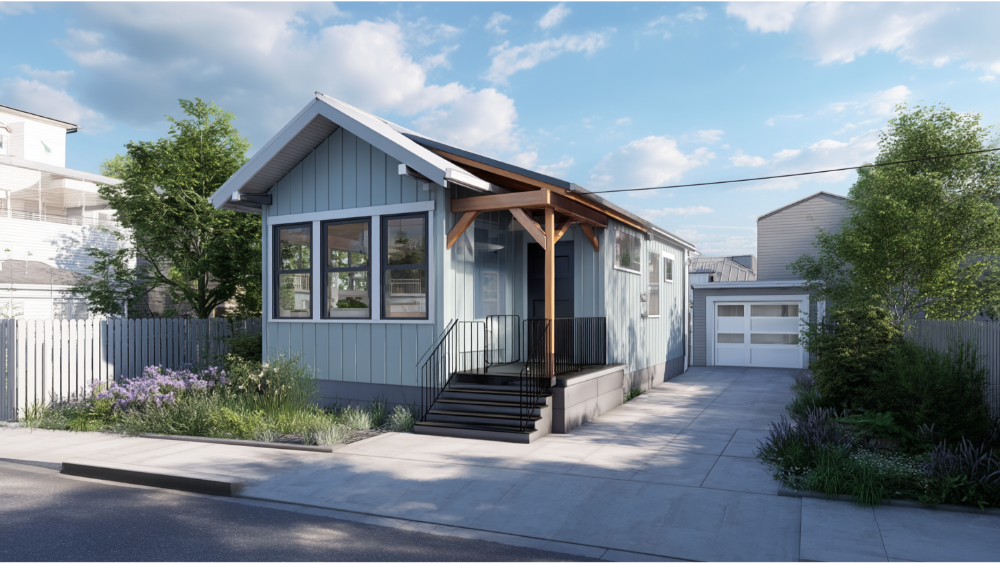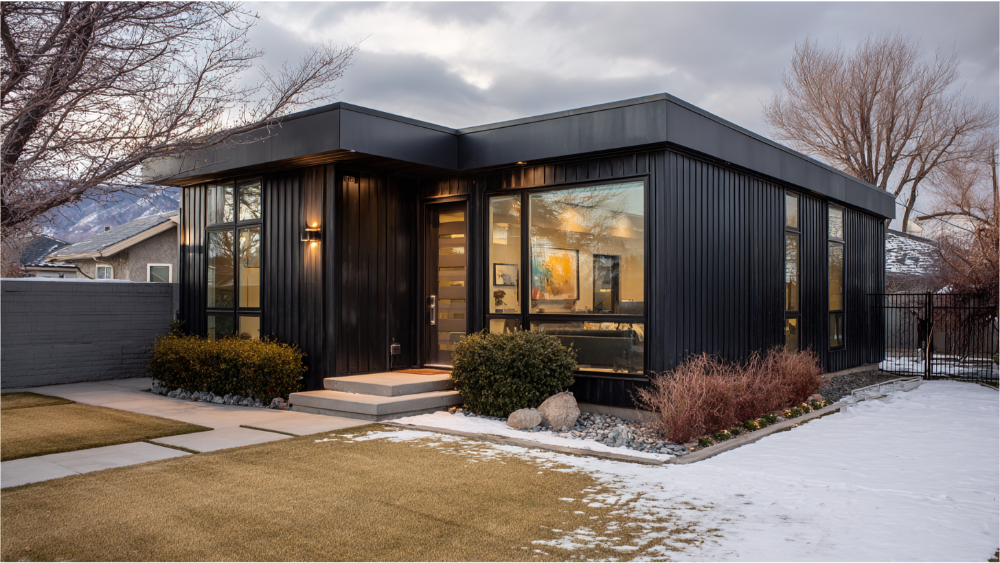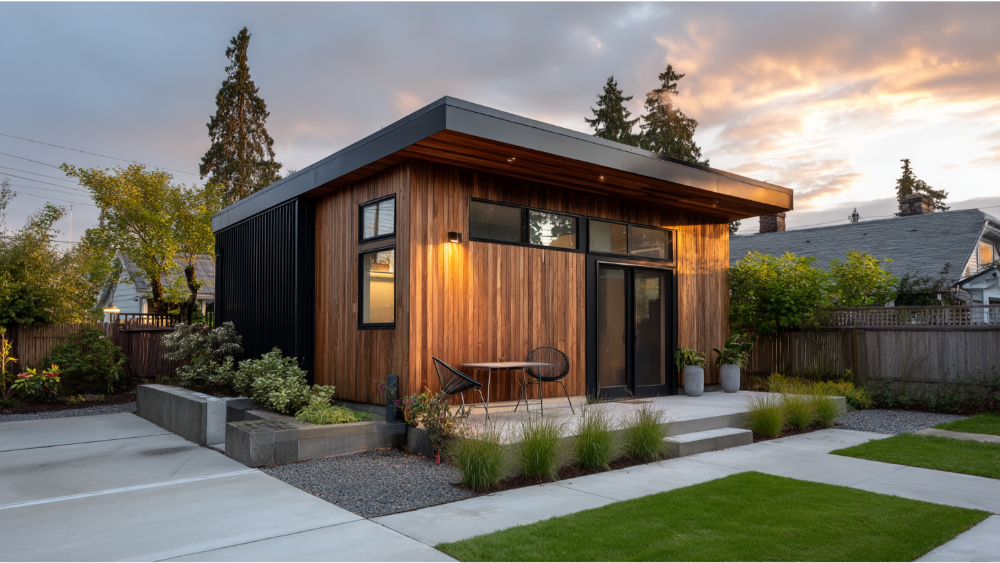Partnered with #1 ADU Builders
Contact Golden State
Drop us a line! We look forward to discussing your next project with you!
Cut the chase! Schedule a face-to-face virtual meeting with us today to dive into your project's next steps.
For our returning clients, experience our streamlined, contact-free project proposal process. Simply fill out our short project questionnaire, and we'll deliver your project proposal within 72 hours.
Contact Us:
Follow Us:

- Golden State Design & Engineering
- Comment 0
Where Can You Put a Tiny Home in California? (2025 Legal Guide)
The tiny house movement continues to transform housing options across California. More people are embracing the tiny house lifestyle to live more affordably, reduce their environmental footprint, and create flexible living space. But one of the biggest questions tiny homeowners face is this: where can you put a tiny home legally in California?
Whether you’re drawn to tiny house living for financial freedom, minimalism, or creating an accessory dwelling unit for rental income or family use, knowing where and how to place a tiny home is essential. This 2025 guide explains where tiny houses can legally go, how to navigate local zoning ordinances, and what tiny house regulations to consider before building.
What Qualifies as a Tiny Home?
Understanding the Basics
A tiny home is a small dwelling typically under 400 square feet, though some stretch the definition up to 600 square feet. It can be built on a permanent foundation or constructed as a mobile unit, such as a park model or tiny house on wheels. Many tiny homeowners use their space as an ADU or as their primary residence.
Tiny homes may follow different building codes depending on their construction method. Tiny houses on wheels must often meet ANSI standards for recreational vehicles, while permanent tiny homes must comply with the California Building Code or International Residential Code. These safety standards affect everything from ceiling height and floor area to utility access and ventilation.
Tiny Homes as Accessory Dwelling Units

One of the most popular ways to put a tiny house in California is to use it as an accessory dwelling unit. These legally recognized secondary homes can be built on most residential lots in the state, subject to zoning laws and local regulations. If your tiny home is built on a permanent foundation and meets code, it can often qualify as an ADU.
Accessory dwelling units must be permitted and properly connected to utilities. In many cities, they can be up to 1,200 square feet, but a tiny house can function well within 400 square feet if designed properly. The ADU route is ideal for those looking to generate rental income or house family members while staying fully legal.
Where Can You Legally Put a Tiny Home in California?
Private Properties and Residential Lots
Many tiny homeowners choose to place their homes on private land as a secondary unit. Most counties in California allow tiny homes on single-family or multi-family residential lots when used as ADUs. You must meet setback requirements, local zoning regulations, and obtain a building permit through your local planning department.
The lot must be large enough to accommodate your tiny home while still meeting minimum square footage requirements, fire access rules, and parking standards. Most planning departments also require that your unit be tied into sewer, water, and electric systems. For movable units, you may also need to meet special zoning codes for park models or tiny houses on wheels.
Tiny Home Communities
Tiny home communities are specially zoned developments where multiple small dwellings share land, amenities, and infrastructure. These communities are gaining popularity as more people seek affordable housing options and community living. California has seen an uptick in tiny house communities that include shared laundry, community gardens, walking trails, and even dog parks and fitness facilities.
Tiny house enthusiasts who prefer living among like-minded individuals often choose these developments for their flexibility, affordability, and tiny house lifestyle benefits. These communities are ideal if you want a sense of neighborhood without the size or cost of a traditional home.
Rural Areas and Agricultural Zones
If you own land in rural areas, you may have more flexibility. Many counties in California allow tiny homes in agricultural or unincorporated zones with fewer restrictions than city zoning laws. That said, you still need to comply with safety standards and get the necessary permits from the zoning department.
Utility access is often a challenge in rural settings. You may need to install a septic system, drill a well, or use solar panels and composting toilets. Off-grid tiny home living can be rewarding, but it requires careful planning and knowledge of local ordinances.
RV Parks and Mobile Home Parks
Another legal place to put a tiny house is in an existing RV park or mobile home community. Many parks allow tiny houses on wheels or park models as long as they meet certain design and size standards. Some cities treat park models as a hybrid between recreational vehicles and mobile homes, subject to specific regulations.
Living in an RV park can be cost-effective and convenient if the park allows long-term stays. However, each park has its own rules, and not all allow full-time living or tiny house setups. Always check with the park manager and the local zoning department before placing your unit.
Navigating Local Zoning and Building Regulations

Zoning Laws and Local Planning Departments
Zoning laws determine how land can be used, and they vary from one city or county to the next. Before you buy land or begin construction, contact your local zoning department or planning department to find out:
- Whether tiny homes are allowed in your zoning district
- Minimum lot size or floor area requirements
- Setbacks, height restrictions, and parking rules
- Whether your home must be on a permanent foundation
Many cities now have separate guidelines for accessory dwelling units, park models, and tiny houses on wheels. It’s essential to follow these regulations to avoid fines, denial of permits, or forced removal of your tiny home.
Building Permits and Code Compliance
To live in a tiny home legally, you must obtain a building permit and meet applicable building codes. Permanent homes must follow the California Building Code or the International Residential Code, which set requirements for ceiling height, insulation, egress, and other safety factors.
Movable tiny homes, such as those on trailers, often need to meet ANSI or RVIA certification and may require inspection by the local zoning department to ensure they’re safe for long-term occupancy.
Places You Typically Cannot Place a Tiny House

While there are many options for legally placing a tiny house, there are also limitations:
- You cannot typically park a tiny house in a driveway or vacant lot without utility access or permits.
- Commercial or industrial zones usually prohibit residential units unless special use permits are granted.
- Homeowners associations (HOAs) may prohibit tiny homes, even if the city allows them.
- Parking a tiny house on wheels in a friend’s yard may violate local ordinances or state housing codes.
Benefits of Legal Placement
Rental Income and Long-Term Value
When your tiny home is legally placed, you can generate rental income, increase your property value, and sell your property more easily. ADUs can be legally rented out in most jurisdictions, and their popularity is rising as cities look for affordable housing solutions.
Lifestyle Flexibility and Comfort
Legal placement means peace of mind. You can live comfortably knowing your home meets safety standards, is properly connected to utilities, and is protected by home insurance. Whether you use it as a home office, guest house, or permanent residence, your tiny home adds functional living space to your property.
How to Choose the Right Placement for Your Tiny Home

Consider these factors when deciding where to place your tiny house:
- Do you want to own land or live in a community?
- Are you seeking an urban, suburban, or rural lifestyle?
- What are your local zoning codes and building regulations?
- Can you access utilities, or will you need off-grid systems?
- Do you want to generate rental income, live full-time, or use the space seasonally?
These questions help determine whether a private backyard, rural lot, or tiny home community is the right fit for your goals.
Frequently Asked Where Can You Put a Tiny Home Questions
Can I live in a tiny house on my own land?
Yes, if local zoning allows it and you meet all building and utility requirements. Most counties allow tiny homes on residential land as ADUs or secondary units.
Can I live in a tiny house on wheels full-time?
Only if local zoning laws and RV park regulations permit it. Some cities have pilot programs or ordinances that allow tiny houses on wheels as long-term residences.
Do I need a building permit for my tiny home?
Yes. Whether your home is movable or permanent, you’ll need permits for placement, utilities, and code compliance. Contact your local planning department for specifics.
Can I rent out my tiny home legally?
Yes, if it is permitted as an accessory dwelling unit and complies with local rental rules. Short-term rental rules may vary.
What is the minimum square footage for a tiny house?
In California, most codes allow homes under 400 square feet as long as they meet safety and livability standards. Some zoning regulations impose minimum square footage requirements or specific ceiling height rules.
Final Thoughts: Where You Can and Should Put a Tiny Home
Tiny homes are more than a housing trend, they’re a smart, sustainable, and affordable way to expand your living space. But to live in a tiny home legally, you need to follow local regulations, building codes, and obtain the necessary permits. Whether you’re placing your home in a tiny home community, on rural land, or in your backyard as an ADU, careful planning is key.
Golden State ADUs specializes in helping homeowners design, permit, and build custom small dwellings that meet every zoning code and city requirement. From site evaluation to utility connections and final inspections, we manage the entire process so you can live in a tiny home with confidence.
Ready to Put a Tiny Home on Your Property?
If you’re ready to live in a tiny home or add one to your property, we’re here to help. At Golden State ADUs, we offer full-service design, permitting, and construction support tailored for tiny homes and accessory dwelling units in California.
#NAICS’s:
- 541310 Architectural Services &
- 541330 Engineering Services
DUNS NO:
- 119132267
#SIC’s
- 8712 Architectural Services &
- 8711 Engineering Services
Cage #
- 9R4L5
#UNSPSC’s:
- 81101500, 81101502, 81101505, 81101508, 81101526, 81101533, 81101522

